AI Frost Maps vs. Traditional Methods
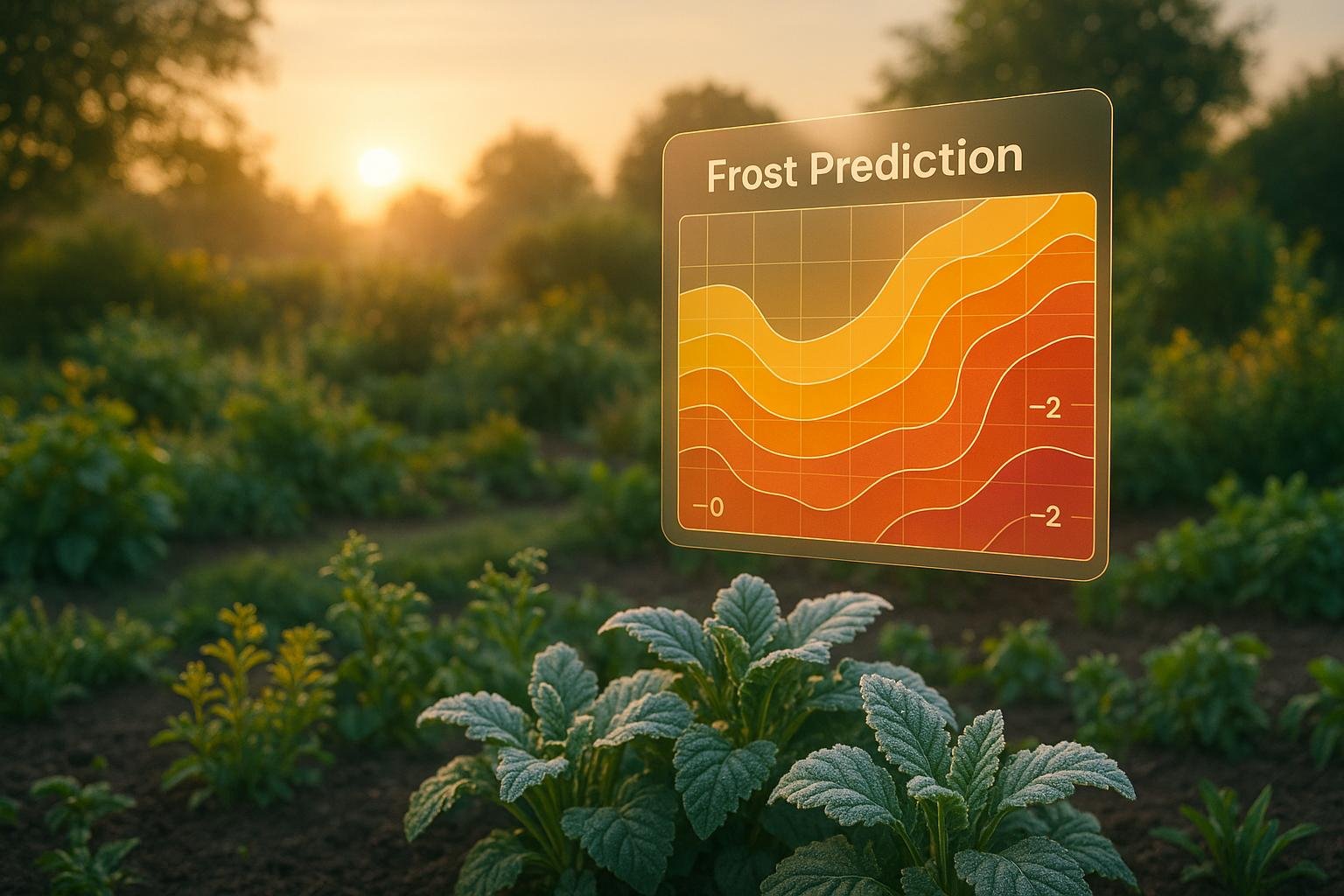
AI frost maps are transforming how gardeners predict frost, offering hyper-local, real-time insights that outperform older methods. These tools use machine learning and minute-by-minute data to provide precise forecasts, helping you protect plants and plan better. Traditional methods, like weather station data and historical averages, fall short in accuracy, especially with shifting climate patterns. Here's what you need to know:
- AI Frost Maps: Use real-time data, local terrain, and advanced algorithms to predict frost with a temperature error of just 2.8°F to 3.1°F for short-term forecasts.
- Traditional Methods: Relies on broad, regional data and historical trends, with less precision and limited adaptability to microclimates.
- Key Advantages of AI: Site-specific predictions, real-time alerts, and integration with garden planning tools like AIGardenPlanner.
- Why It Matters: Frost events cause more crop damage than any other weather hazard in the U.S., making accurate predictions critical for reducing losses.
Quick Comparison:
| Feature | AI Frost Maps | Traditional Methods |
|---|---|---|
| Accuracy | Error: 2.8°F–3.1°F | Error: 4.46°F–5.62°F |
| Coverage | Site-specific predictions | Regional or broad estimates |
| Real-Time Updates | Continuous monitoring | Manual checks required |
| Response to Microclimates | High | Limited |
| Ease of Use | Automated and intuitive | Manual interpretation needed |
AI frost maps give you the precision and tools to protect your garden in today’s unpredictable climate. Keep reading to see how these systems work and why they’re changing the game for gardeners.
How AI Frost Mapping Tools Work
AI Frost Map Technology Explained
AI frost mapping tools bring together a variety of data sources to deliver highly localized frost predictions. By blending advanced technologies, these tools provide gardeners with precise insights that can make a big difference in protecting plants during frost-prone periods.
The core of these tools lies in machine learning algorithms trained on vast datasets from weather stations, digital elevation models, and normalized difference vegetation index (NDVI) data [3]. Local sensors and NDVI data work in tandem with elevation models to capture the microclimate factors that influence temperature variations [3]. This seamless integration allows for accurate, actionable frost predictions.
These systems monitor temperature changes minute-by-minute [6]. The type of algorithm used depends on the prediction timeframe: Random Forest models are particularly effective for short-term forecasts (24 hours or less) [5]. For longer-term predictions, factors like soil temperature play a crucial role, acting as a natural thermal buffer that helps regulate overnight cooling [2]. In areas without on-site sensors, spatial interpolation techniques estimate minimum temperatures, achieving frost detection rates as high as 92.55% [3].
Benefits of AI Frost Mapping Tools
AI frost mapping tools offer gardeners hyper-local insights that can significantly improve plant management. Unlike traditional forecasts that provide broad regional trends, these tools focus on specific locations - down to an individual row or shelf - allowing for precise, targeted decisions about which plants need protection.
Real-time monitoring is another game-changer, enabling gardeners to adjust seeding and crop protection at just the right moment [6]. Historical weather data analysis further enhances frost prevention strategies, improving planting schedules and crop variety choices by up to 30% [1].
These tools also integrate seamlessly with garden planning systems. For instance, AIGardenPlanner combines frost data with garden images to recommend suitable plants and the best planting spots for optimal growth.
The economic advantages are noteworthy as well. In 2023, vineyards using microclimate AI saw grape yields increase by up to 23% compared to traditional methods [6]. Home gardeners can also benefit, with higher plant survival rates and better-timed harvests. Additionally, AI systems help conserve resources by analyzing factors like evaporation rates, soil texture, and root depth to create efficient watering plans. Vertical farms, for example, have reported a 30% reduction in water usage without compromising output [6].
AI frost mapping tools also support detailed frost damage assessments. Using satellite monitoring and vegetation indices like MSAVI and NDRE, these systems can quickly detect frost damage [1]. This allows gardeners to make informed decisions about replanting or recovery efforts.
Traditional Frost Prediction Methods
Common Traditional Frost Prediction Tools
For generations, gardeners have leaned on traditional methods to predict frost, using tools and insights passed down over time. One of the most relied-upon resources is historical weather data. By reviewing local weather station records, gardeners can estimate the last spring frost and the first fall frost, helping them decide when to plant sensitive crops or prepare for colder weather [7].
Online frost date calculators have also become popular among home gardeners. Platforms like The Old Farmer's Almanac and Dave's Garden let users input their zip code to get frost date predictions tailored to their area. These tools often include probability ranges, such as a 50% chance of frost by mid-October or a 90% likelihood that the last spring frost will occur before late April [7].
Local Cooperative Extension Offices offer another valuable resource. These offices provide frost dates and planting calendars specifically designed for their regions. With decades of localized agricultural data, they can deliver advice that matches the unique growing conditions of a particular area [7].
In addition, weather apps and websites like AccuWeather, Weather Underground, and Farmers' Almanac play a key role in frost prediction. These platforms offer frost alerts, seasonal forecasts, real-time temperature updates, and insights into historical frost patterns. Many gardeners check these sources daily during frost-prone seasons to stay ahead of sudden temperature drops [7].
While these tools have long been staples for gardeners, they reveal several shortcomings when compared to the precision and adaptability of AI-driven solutions.
Problems with Traditional Methods
Traditional frost prediction methods, while useful, come with notable limitations in accuracy and responsiveness [8]. Frost events have caused U.S. agricultural losses amounting to hundreds of millions of dollars, highlighting the need for better tools [4].
One of the biggest issues is their limited ability to account for microclimates. These small-scale variations in temperature can differ dramatically, even within the same property. For example, a weather station located just five miles away might report temperatures above freezing, while a nearby low-lying area could experience frost due to differences in elevation, nearby structures, or local terrain [8]. This lack of precision can leave gardeners unprepared for frost events in their specific location.
Traditional methods also rely heavily on manual monitoring, which is both time-consuming and prone to errors [9]. Often, gardeners only realize frost damage has occurred after the fact, missing the critical opportunity to take preventive measures.
Another challenge is the inability to provide real-time updates. While historical data and seasonal forecasts offer general guidance, they cannot adapt quickly to sudden weather shifts or unusual climatic events [8]. The increasing unpredictability of weather patterns, driven by climate change, has made historical trends less reliable for future predictions [7].
Finally, traditional methods struggle to address the finer details of microclimates, such as soil type, slope orientation, and local wind patterns, which all influence frost formation. For instance, vineyards or orchards with plant residue or grass cover might experience temperatures 0°F to 0.9°F colder than areas with bare soil, depending on specific conditions [10]. These subtle differences, often crucial for plant survival, are rarely captured in traditional forecasts.
These shortcomings highlight the need for more advanced and responsive solutions, such as AI-powered frost mapping tools, which can address these gaps with greater precision and adaptability.
AI Frost Maps vs Traditional Methods: Side-by-Side Comparison
Comparison Table
| Criteria | AI Frost Maps | Traditional Methods |
|---|---|---|
| Prediction Accuracy | 6-hour prediction RMSE: 2.75–3.10°F | 48-hour MAE: 4.46–5.62°F |
| Spatial Resolution | Site-specific, field-scale precision | Limited by weather station locations |
| Microclimate Adaptation | Considers local terrain, elevation, and soil conditions | Struggles with complex terrain variations |
| Real-Time Updates | Continuous monitoring with instant alerts | Manual checking required, delayed responses |
| Lead Time Options | Multiple prediction windows (6–48 hours) | Primarily seasonal forecasts and daily updates |
| Ease of Use | Automated analysis with user-friendly interfaces | Requires manual interpretation of multiple sources |
| Climate Change Adaptation | Adapts to evolving patterns using machine learning | Relies on historical data that may be outdated |
| Cost Effectiveness | Lower long-term operational costs | Higher labor costs for monitoring and interpretation |
Main Findings from the Comparison
This comparison highlights the ways in which AI frost maps excel when measured against traditional methods. AI frost maps significantly outshine traditional approaches in prediction accuracy, spatial detail, and real-time responsiveness. For instance, machine learning algorithms achieve a 6-hour prediction RMSE of about 2.75–3.10°F, compared to the 48-hour prediction error of 4.46–5.62°F seen with traditional systems [2]. Such precise short-term predictions are invaluable for gardeners who need to act quickly to protect their crops.
Spatial precision is another area where AI stands out. As Carl J. Talsma of Los Alamos National Laboratory explains, traditional forecasts often fall short in providing accurate predictions at the field level, especially in areas with complex terrain [2]. AI models, however, use localized data to offer site-specific insights, bypassing the limitations of broader, large-scale weather models that struggle in these environments.
Adaptability is also a key advantage of AI systems. Unlike traditional methods, which depend heavily on historical weather data, AI models continuously learn and adjust using new data. This ability to adapt makes them far better equipped to handle the unpredictable shifts in climate patterns.
Usability is another strong point. Traditional methods often require gardeners to sift through multiple sources and interpret various probability ranges. In contrast, AI systems process complex meteorological data automatically, delivering clear and actionable alerts. This not only saves time but also reduces the risk of human error in decision-making.
The performance of AI systems is backed by research. One study revealed that neural network predictors deliver far better results than traditional models, with over 60% of predictions falling within ±2.7°F of actual temperatures [5]. Additionally, advanced balancing techniques improved frost detection recall rates from 55% to 82%, meaning the system correctly identified 82% of frost events compared to just over half with traditional methods [5].
The economic stakes are high. Frost damage is the leading cause of weather-related agricultural losses in the United States, with a single frost event sometimes resulting in damages exceeding $700 million [11]. The enhanced accuracy and early warnings provided by AI systems allow gardeners to take timely protective actions, potentially saving crops and preventing substantial financial losses that traditional methods might fail to avert.
sbb-itb-4d6a8dd
🚀 Ready to Reinvent Your Garden?
Join thousands of homeowners who have transformed their gardens using our AI design tool. Upload one photo to explore endless possibilities.
Get your AI garden designs →How AI Frost Maps Help Gardeners
AI frost maps are changing the game for U.S. gardeners, offering precise frost predictions that help with smarter planting decisions and better crop protection. These tools provide localized insights, enabling gardeners to determine the best times to plant, select the right varieties, and shield their plants from frost damage.
Smarter Planting Schedules and Better Plant Choices
AI frost mapping technology takes the guesswork out of planting schedules. By analyzing historical weather trends and local climate data, these systems deliver tailored recommendations for individual gardens. They even use satellite imagery and on-the-ground data to suggest plants that are more likely to survive unexpected frost events. This means gardeners can choose frost-resistant varieties that are specifically suited to their local conditions.
Traditional weather forecasts, like those from the National Weather Service, often miss the unique microclimates of individual backyards due to their 12-kilometer spatial resolution [11]. AI frost maps, on the other hand, can pinpoint frost-prone spots in a specific garden, helping gardeners plan more effectively.
In addition, satellite monitoring tools can detect frost damage using vegetation indices like MSAVI and NDRE, providing even more insight into how frost impacts plants [1].
Early Warnings for Frost Protection
Real-time monitoring offered by AI systems gives gardeners critical early warnings, sometimes as much as 24–48 hours in advance, or even within an 8-hour window [11]. This lead time allows gardeners to take action, whether that’s covering plants, using heaters, or employing other frost mitigation techniques. The flexibility in prediction windows ensures gardeners can choose the right approach based on how quickly frost is approaching.
This isn’t just about saving plants - it’s about saving money. Frost damage causes more economic losses to U.S. crops than any other weather-related hazard [11]. AI tools also help by identifying high-risk areas using satellite data, enabling gardeners to focus their frost prevention efforts where they’re needed most [1]. For instance, automated systems like smart irrigation can be triggered to protect plants even when gardeners aren’t home.
These timely alerts provide actionable insights, as seen in platforms like AIGardenPlanner, which integrates frost predictions into its features.
How AIGardenPlanner Supports Gardeners
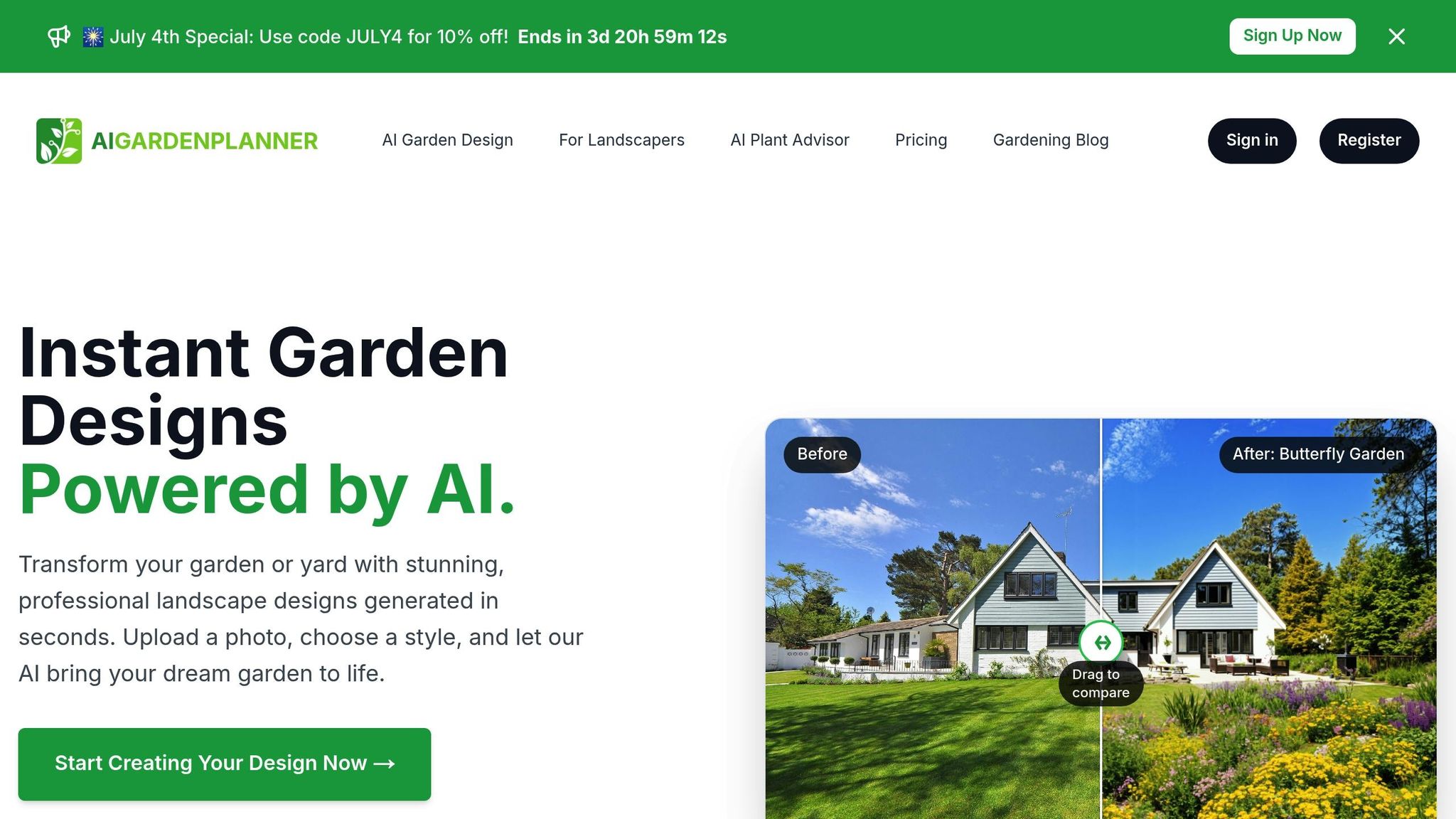
AIGardenPlanner takes frost prediction a step further by weaving it into the garden planning process. Its AI Plant Advisor uses local frost data to recommend plants that are well-suited to each garden’s unique microclimate.
When gardeners upload photos of their outdoor spaces, the platform’s AI analyzes visual elements alongside location-based factors like elevation and terrain, which can influence frost risk. This ensures that gardeners get recommendations tailored to their specific environment, from planting times to frost protection strategies.
The platform also provides detailed growing guides and maintenance schedules that incorporate frost protection tips for each plant. For instance, gardeners learn when frost threats are most likely and how to shield vulnerable plants during those periods.
With over 50 garden styles to choose from, AIGardenPlanner helps create layouts that naturally integrate frost-resistant plants and strategic placements. For example, tender plants might be placed near south-facing walls or other sheltered spots, while hardier perennials can thrive in areas more exposed to frost. It’s all about designing a garden that’s not just beautiful but also resilient.
Conclusion
Comparing AI frost maps to traditional frost prediction methods highlights a clear edge for today’s gardeners. AI-powered systems bring a level of precision that traditional methods struggle to match. For example, machine learning models achieve impressively low RMSE values, outperforming older forecasting systems in accuracy [2]. This accuracy isn’t just a technical feat - it directly helps protect plants and the investments gardeners make in their outdoor spaces.
While traditional forecasts provide broad, regional predictions, AI systems take it a step further by offering real-time, hyper-local insights. These tools can assess frost risks down to the microclimate of an individual garden. That means gardeners get specific, actionable data rather than generalized forecasts, allowing them to respond effectively to potential frost threats.
Another major advantage is ease of use. AI frost mapping tools handle the heavy lifting by automating data monitoring and interpretation. Instead of manually collecting and analyzing data, gardeners receive timely alerts, giving them ample time to take protective measures like covering or heating delicate plants.
The practical benefits of these advancements are clear. Platforms like AIGardenPlanner integrate AI frost prediction with garden planning, offering tools that go beyond basic forecasts. Features like the AI Plant Advisor recommend plants suited to local frost conditions and provide growing guides with built-in frost protection strategies. This makes it easier to design gardens that not only thrive but are also resilient to changing weather patterns.
With climate unpredictability on the rise, the ability to adapt quickly and accurately to frost risks is becoming essential for successful gardening. AI frost maps are a game-changer, helping U.S. gardeners safeguard their plants, plan smarter, and create gardens that flourish despite weather challenges. These tools empower gardeners with the insights they need to make informed, timely decisions.
FAQs
How do AI frost maps help gardeners protect crops and plan better?
AI frost maps offer up-to-the-minute, localized insights into frost risks, empowering gardeners to take quick and effective steps to safeguard their plants. By processing regional climate data, these tools can forecast frost events, giving gardeners the chance to prepare with solutions like frost covers or heating systems.
When combined with advanced garden planning tools - like AI-driven design platforms - these maps can also help optimize planting schedules and adapt to specific microclimates. This forward-thinking strategy reduces the impact of frost, enhances plant health, and increases yields, making garden care more dependable and efficient.
What data do AI frost mapping tools rely on for accurate predictions?
AI frost mapping tools rely on a mix of real-time weather data and detailed forecasts to offer accurate predictions. They examine variables such as temperature, humidity, wind speed, and historical weather trends to pinpoint frost risks with precision.
Using advanced machine learning algorithms, these tools can quickly process large datasets, delivering frost alerts tailored to specific areas. This approach offers a major improvement over older methods, which typically depend on broader, less adaptable data sources.
How do AI frost maps save gardeners money compared to traditional methods?
AI frost maps are a game-changer for gardeners, helping them cut costs by offering precise and timely frost forecasts. With this information, gardeners can take steps like covering plants or adjusting watering schedules to protect their crops, avoiding the financial hit that frost damage can bring.
These tools also make resource use more efficient. By optimizing water, energy, and other inputs, they help reduce waste. The result? Lower expenses and higher yields, making gardening both more economical and efficient than relying on older, less accurate methods.
Related posts
Related Articles

Natural Wood Treatments for Sustainable Garden Design
Explore eco-friendly wood treatments for gardens, from tung oil to milk paint, and find the best options for your sustainable garden design.
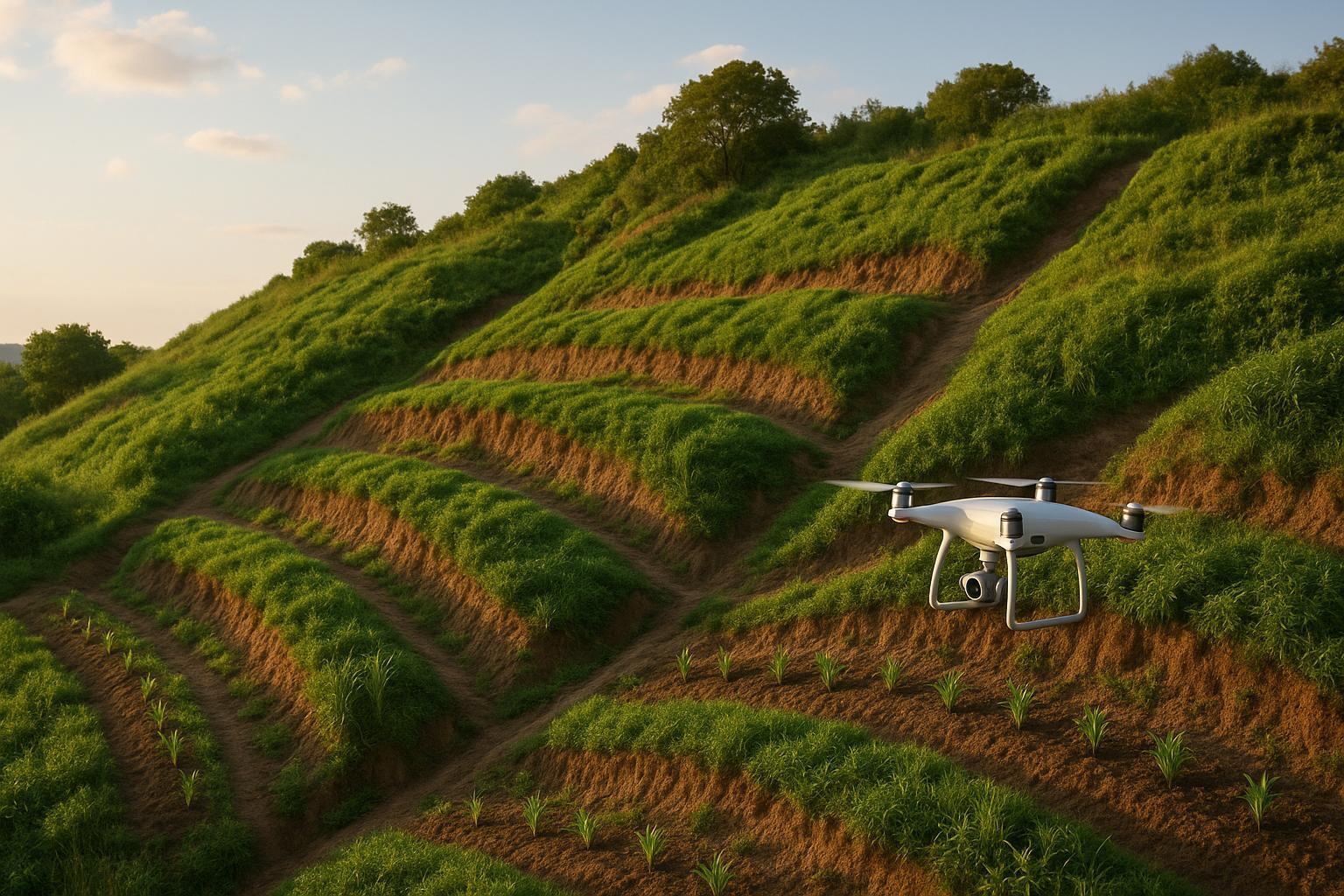
AI Tools for Soil Erosion Control
Explore how AI tools are revolutionizing soil erosion control with real-time monitoring, mapping, and tailored strategies for effective land management.
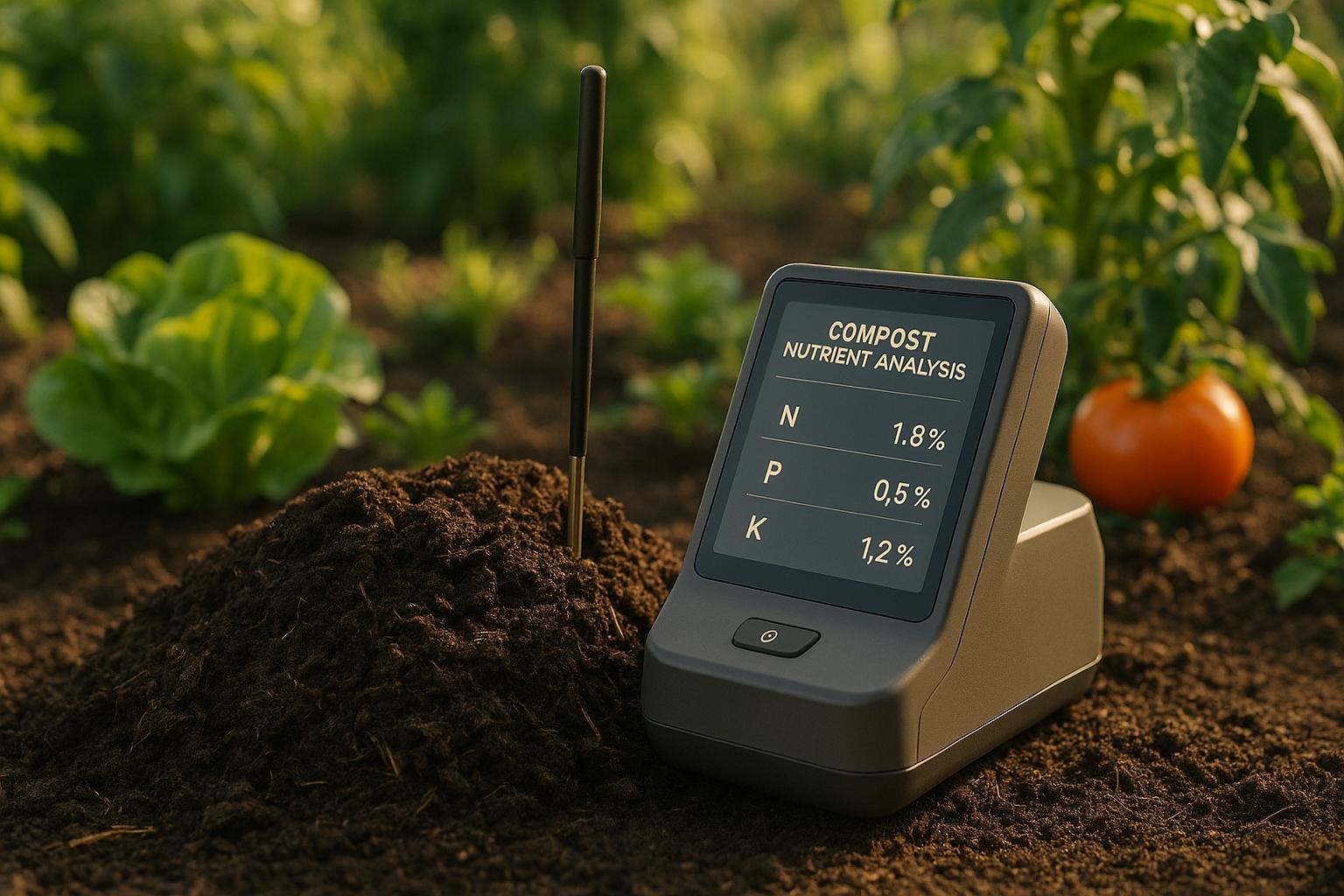
AI Tools for Compost Nutrient Analysis
Explore AI tools that enhance compost nutrient analysis, offering faster, accurate insights for gardeners and farmers at all levels.
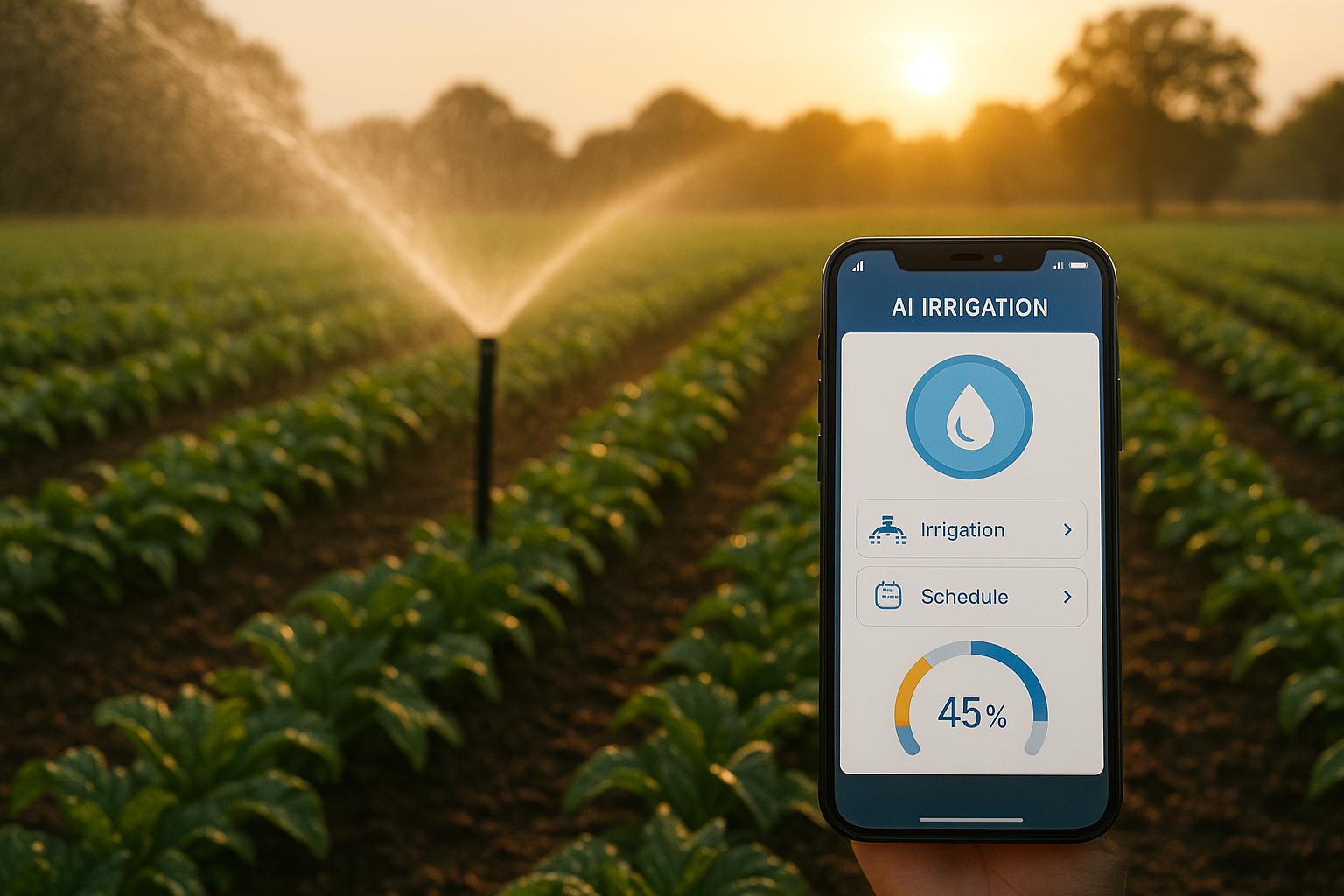
AI-Powered Irrigation Apps: How They Work
AI-powered irrigation apps optimize water use, enhance plant health, and reduce costs, transforming how we manage gardens and farms.
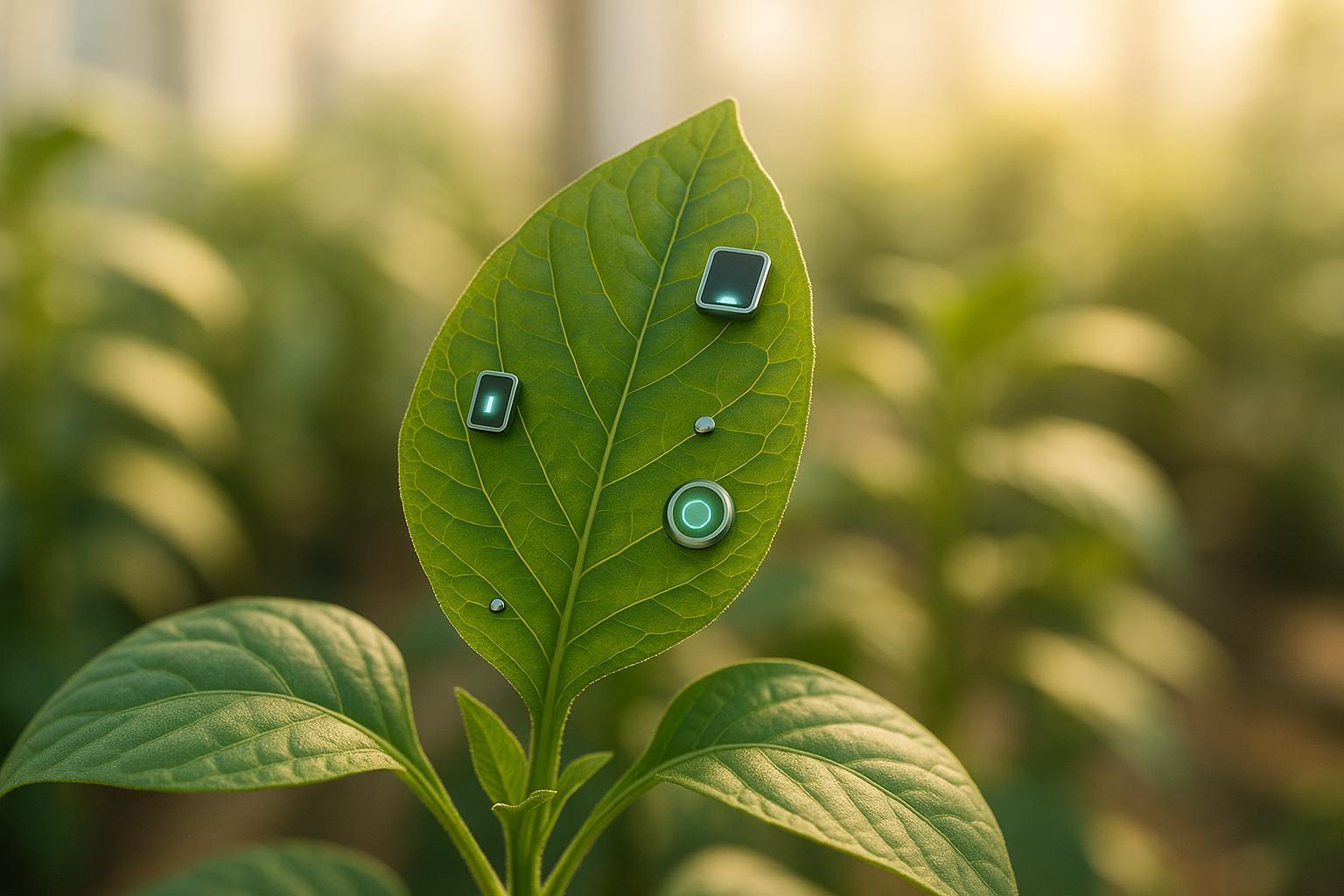
How Multi-Sensor Systems Detect Plant Diseases
Explore how multi-sensor systems revolutionize plant disease detection with advanced technology, offering early insights and precise treatment strategies.

Unveiling the Legacy of Elizabeth Ann Weber in Environmental Activism and Sustainability
Explore the life and works of Elizabeth Ann Weber, a prominent figure in environmental activism and sustainability. Learn about her early life, career milestones, and impact on the industry.